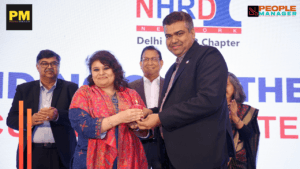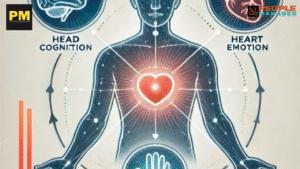The Role of HR business partners as DEI champion at the workplace
When an organisation creates a DEI programme, it should be globally recognised as well as locally designed. As a multinational corporation with manufacturing and offices in numerous countries, "one size does not fit all." Such an organisation should recognise that building strength in the diversity of their team members also requires diversity in their approaches.”

The Role of HR business partners as DEI champion at the workplace
Creating an inclusive and healthy workplace culture necessitates a holistic, yet curated, approach that creates seamless experiences for team members. But who is better at it? Can the HR leader does it? Or Someone else in the chain?
However, the diversity, equality and inclusion (DEI) programmes of an organisation must be as unique as the countries, languages, people and teams they represent.
When an organisation creates a DEI programme, it should be globally recognised as well as locally designed. As a multinational corporation with manufacturing and offices in numerous countries, one size does not fit all. Such an organization should recognize that building strength in the diversity of their team members also requires diversity in their approaches.”
Given the importance of HR professionals in DEI implementation, who plays a significant role in DEI implementation? In this area the HR business partners play a crucial in fostering an inclusive workplace culture by ensuring that all employees feel valued and respected regardless of their background, gender, race, ethnicity, religion, sexual orientation, or any other characteristic.
Now, in what ways, HR business partners can contribute to creating a more inclusive workplace culture? What strategies or tactics HRBP can apply?
As HR practitioners, the HR think tank takes it for granted when we say to leaders that they need to be inclusive, and we assume that they know what we mean. As a result, it must begin with “Leader Education.”
- Leaders at all levels must receive training in unconscious bias, which occurs when leaders make judgements about people based on gender, race, or other factors without realising it. Training helps to make people aware of such form of bias and drives the importance of modelling inclusive behaviour.
- Inclusive behaviour includes engaging in active listening during performance reviews, encouraging different points of view in meetings and carefully choosing what language to use, hiring practises, consciously looking at promotion mix, pay parity etc.
- Develop a collective DEI team and people development team: Such teams can continuously evaluate professional development offerings to ensure managers have opportunities to learn and better manage a diverse workforce.
- Listening to team members: In order to gain a better understanding of engagement and inclusion issues, we conduct engagement surveys and hold focus groups. HR can and should play a key role in facilitating these sessions, raising awareness among leaders and providing opportunities for team members to provide feedback.
- Though it may be surprising, and it can be daunting sometimes, especially for HR, to go into these meetings because you never know what you’re going to be asked.
- Comprehensive assessment of surveys: The organization’s demographics and people processes helps in developing specific strategies to promote inclusiveness. Leader-led town hall meetings as part of ongoing communication also helps create an environment of ongoing communication from the top. Just being listened to is important to people – being able to voice your concerns in a safe place.
To promote inclusion and diversity within organisations, What HRBP can do better? What steps can they take to improve their effectiveness in this area?
- As HR, Business partners play a key role in influencing leaders and the management team to nurture a diverse and inclusive culture.
- HRBP collaborate with the business, define, develop a common understanding and vocabulary which is then translated into a strategy and specific data backed actions.
- HRBP can take the lead in driving initiatives to improve objective decision-making processes by devising inventive ways of identifying workplace bias, and sensitizing team members and furthering collective understanding about discrimination at various levels and ways to address them.
HR business partners should be prepared to face challenges; how do HRBPs typically deal with them?
- People are complex, and the challenge is to create and nurture an environment in which ‘each’ individual can assimilate, contribute, and develop. Rapid technological advancements have added new complexities to cultivating a high-performing and innovative workforce.
How can HRBP measure the success of inclusion initiatives, and what metrics can be used to track progress?
It is only natural that HR track and trace each of their people initiatives when creating products that are foundational to the data-centric world.
- As the first instant, HRBP can conduct the first return ship program for women and while you have success in terms of numbers, you can find that most of the returnees will be filling non-technical roles. This can help HRBP raise the bar in the program’s second year, when there is a greater emphasis on technical/engineering roles. While the numbers decreased in the second year, the outcome was more significant.
- HRBP must collaborate with other departments within the organization to ensure workplace inclusion and diversity.
- HRBP can network of Employee Resource Groups (ERG) that will bind the organisation together with communities. Women Leadership Network (WLN) can assist you in better bringing together and supporting women in organisations throughout their careers.
- Vikram Solar Appoints Arun Mittal to Lead its Energy Storage Arm - December 3, 2025
- Preventive Healthcare Emerges as a Strategic Investment | Howden Global Employee Benefits Report - November 18, 2025
- Apollo Tyres Ltd and KIIT Announce India’s First Strategic Academic Collaboration - November 18, 2025








